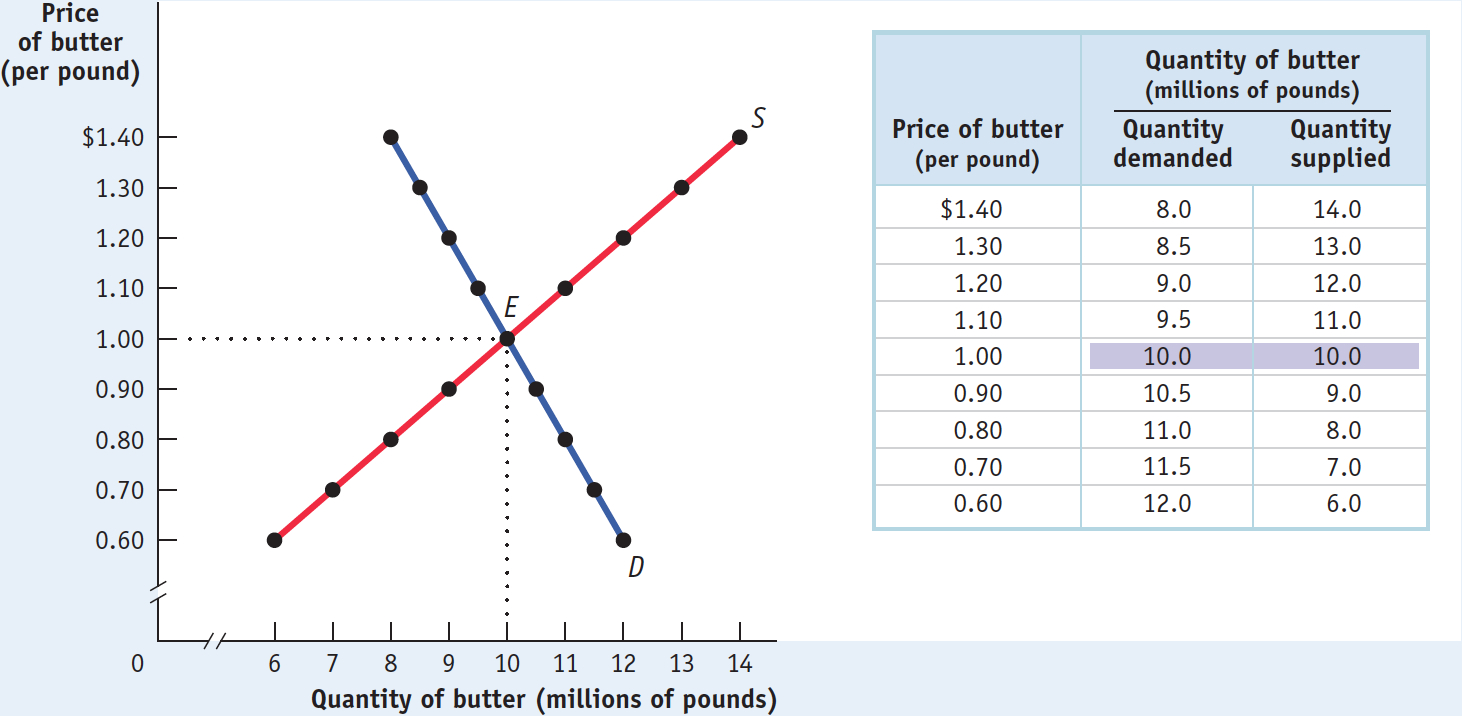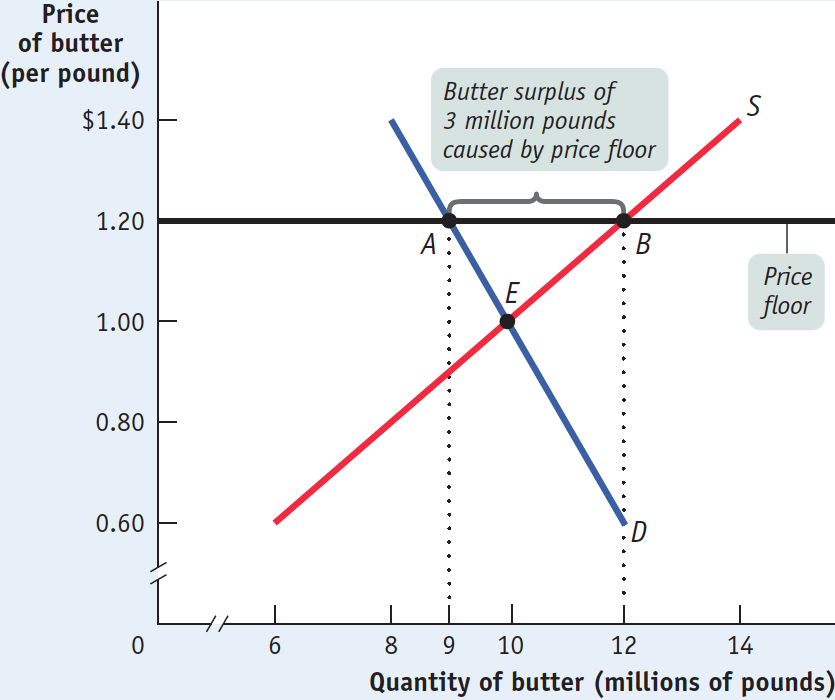Price Floors
Sometimes governments intervene to push market prices up instead of down. Price floors have been widely legislated for agricultural products, such as wheat and milk, as a way to support the incomes of farmers. Historically, there were also price floors—
The minimum wage is a legal floor on the wage rate, which is the market price of labor.
If you have ever worked in a fast-
Just like price ceilings, price floors are intended to help some people but generate predictable and undesirable side effects. Figure 5-5 shows hypothetical supply and demand curves for butter. Left to itself, the market would move to equilibrium at point E, with 10 million pounds of butter bought and sold at a price of $1 per pound.

Now suppose that the government, in order to help dairy farmers, imposes a price floor on butter of $1.20 per pound. Its effects are shown in Figure 5-6, where the line at $1.20 represents the price floor. At a price of $1.20 per pound, producers would want to supply 12 million pounds (point B on the supply curve) but consumers would want to buy only 9 million pounds (point A on the demand curve). So the price floor leads to a persistent surplus of 3 million pounds of butter.

Does a price floor always lead to an unwanted surplus? No. Just as in the case of a price ceiling, the floor may not be binding—
But suppose that a price floor is binding: what happens to the unwanted surplus? The answer depends on government policy. In the case of agricultural price floors, governments buy up unwanted surplus. As a result, the U.S. government has at times found itself warehousing thousands of tons of butter, cheese, and other farm products. (The European Commission, which administers price floors for a number of European countries, once found itself the owner of a so-
Some countries pay exporters to sell products at a loss overseas; this is standard procedure for the European Union. The United States gives surplus food away to citizens in need as well as to schools, which use the products in school lunches. In some cases, governments have actually destroyed the surplus production.
When the government is not prepared to purchase the unwanted surplus, a price floor means that would-